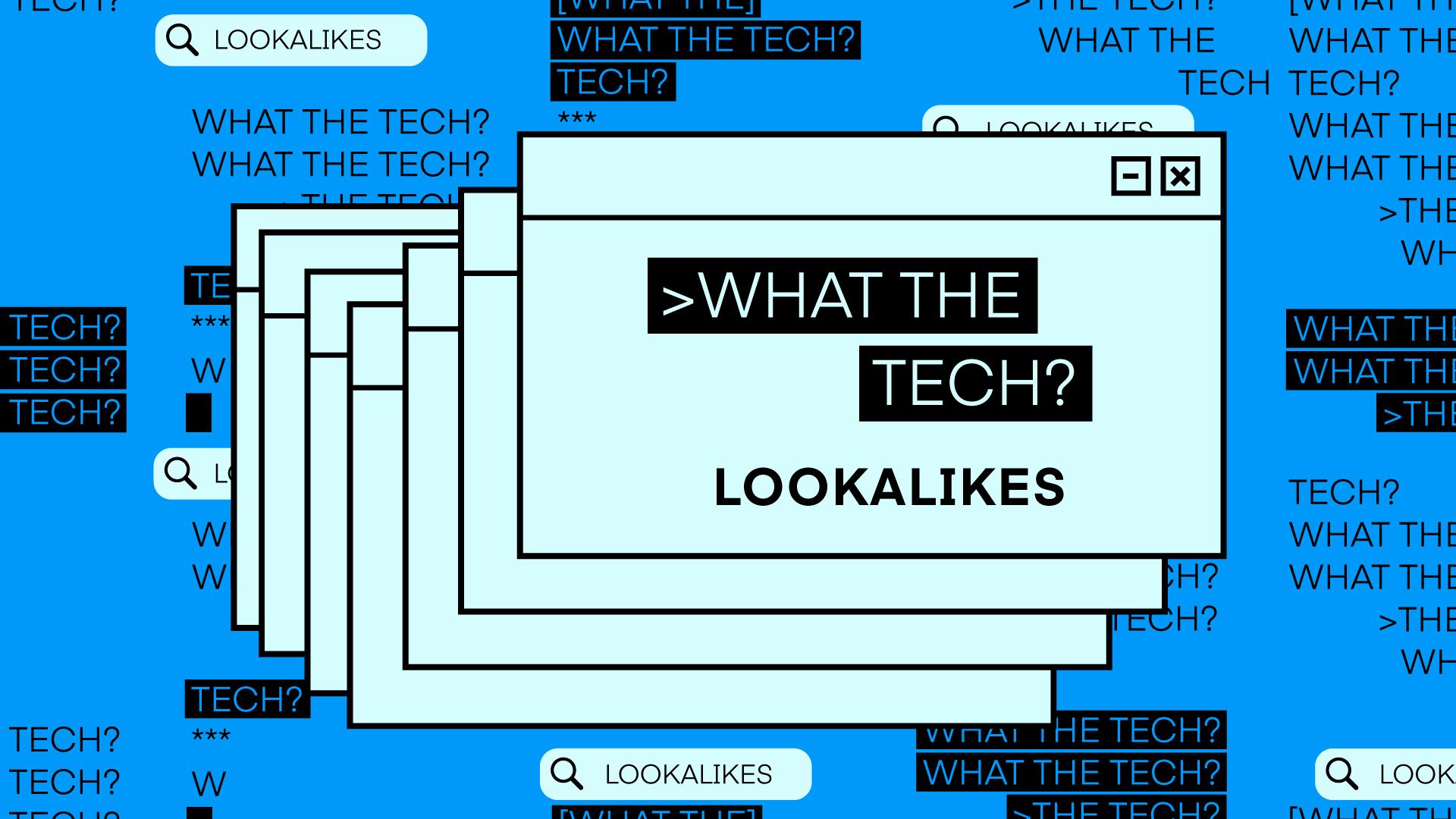What the Tech are lookalikes?
Explaining one of the most powerful and pervasive techniques in digital marketing.

There are few digital marketing techniques that are simultaneously as effective and widely used as lookalike audiences.
Lookalikes are available on every major consumer platform, via a handful of different ad tech companies and on the websites of sophisticated publishers. They help brands expand the reach of their campaigns, but in a manner that is more considered, more targeted, and thus more cost effective.
Despite their ambiguous name and sophisticated technical aspects, lookalikes are fairly straightforward. And we’ve assembled this handy explainer to help newbies understand them.
What are lookalikes?
At the risk of giving a circular definition, lookalikes are consumer segments that look like a brand’s existing customers.
Brands use data about their existing customers to identify consumers with similar attributes. These consumers (the ones in the derivative group) constitute a lookalike audience.
How are lookalikes created?
Lookalikes are often created by blending a brand’s first-party data with third-party data provided by a platform, ad network, data provider, or publisher.
Let’s use a hypothetical:
- A CPG brand creates a campaign to grow sales for an established detergent product. Thanks to its long-term loyalty program, the brand has a great deal of anonymized first-party data about the most loyal customers of that product – from demographic data to other products those customers tend to prefer.
- Once identified, those consumers would provide the benchmark for creating derivative, lookalike audiences.
- Leveraging third party data on an ad platform, the brand can use this benchmark audience to identify other consumers with similar characteristics (the lookalike audience) and target the lookalikes with the campaign.
Targeting consumers who resemble existing customers is a practice as old as marketing itself, but digital marketing tools allow brands to execute it programmatically and at scale.
Facebook and Google are major lookalikes providers, mainly because they collect so much data on consumers and can therefore build incredibly nuanced lookalike audiences. But lookalikes may be available from any firm that sells advertising and collects consumer data — be it an ad exchange that sells inventory via real-time bidding or a publisher that sells ads on its daily news website. (Lookalike audiences can also be purchased from data firms, such as DMPs, but more on that later.)
Why are lookalikes important?
Brands like lookalike audiences because they are more likely to be interested in a brand’s products or services, and that should increase conversions, increase return on ad spend, and drive down customer acquisition costs.
Some brands report conversion rates that are 50% higher when targeting lookalike audiences, or an outstanding 20% overall conversion rate when using lookalikes.
How does cookie deprecation affect lookalikes?
The looming cookie apocalypse, which we covered in depth here, should have a substantial effect on lookalike audiences. Ad exchanges and third-party data brokers rely on cookies to build the lookalike audiences they sell to advertisers. Those companies will have to change tactics once Google no longer allows marketers to conduct third-party cookie tracking on its Chrome web browser.
But this won’t completely do away with lookalike audiences. Brands will still be able to work directly with platforms and publishers to build lookalike audiences.
And there are some solutions to the cookie problem. Ad tech companies are embracing privacy-conscious alternatives to cookies, such as Unified ID 2.0, to allow them to continue targeting lookalike audiences across the web.
Any viable alternative to cookie-based lookalike audiences is sure to be coveted by brands. That’s how valuable lookalikes are.
Subscribe to The Current
Each week, The Current gives you a rundown of the biggest stories and latest trends from the world of data-driven marketing, including topics like Connected TV and the future of identity — all delivered directly to your inbox.